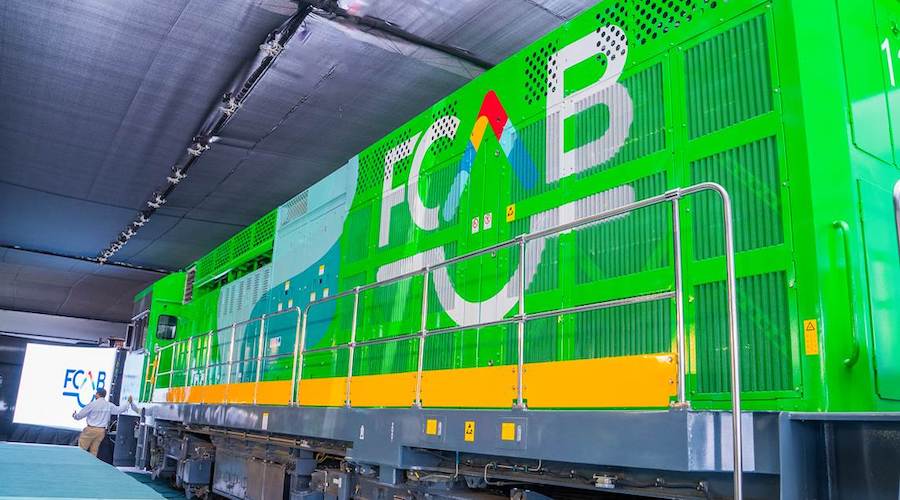Antofagasta unveils South America’s first hydrogen train

Chile-focused Antofagasta (LON: ANTO) will become the first mining company to use a hydrogen-powered locomotive in South America, as part of the copper producer’s efforts to develop alternatives to fossil fuels, reduce greenhouse gas emissions and make mining more sustainable.
FCAB, the miner’s rail transport division, unveiled this week the hydrogen-powered train that will connect Antofagasta city and the regional port starting in 2025.
“This milestone will allow us to learn about this new fuel, which only emits water vapour and hot air, unlike diesel. We want to explore other possible uses of this fuel in the future, when the technology is more mature,” Antofagasta CEO Iván Arriagada said in a statement.
The 1,000-kilowatt train, developed by China’s leading locomotive manufacturer CRRC Qishuyan, features a high-capacity battery and a 35 MPa on-board hydrogen storage system. Its lightweight design reduces the overall weight by approximately 30 tonnes compared to other hydrogen models.
“Our commitment to the community of Antofagasta and to our clients means we explore all available technologies to progressively reduce our greenhouse gas emissions and, in this way, contribute to combatting climate change,” David Fernández, FCAB general manager, noted.
As it only emits water vapour and hot air, the locomotive is seen as key to advancing the group’s decarbonization plan. It will transport sulfuric acid, copper concentrate, anodes, cathodes and other minerals.
Antofagasta is also implementing final installations and is providing training for personnel to operate and maintain hydrogen-powered units.
Carbon-neutral by 2050
The move marks a fresh milestone in the company’s effort to develop alternatives to fossil fuels, reduce greenhouse gas emissions and make mining more sustainable.
Antofagasta, majority-owned by Chile’s Luksic family, one of the country’s wealthiest, has been incorporating advanced technologies to optimize processes and make them greener for years.
At its Centinela copper mining complex, the company incorporated last year the Chilean mining industry’s biggest fleet of electric pick-up trucks.
It is also is implementing a system to optimize the grinding process and reduce energy consumption, especially when treating harder ore.
The mine’s $4.4 billion revamp project, known as New Centinela, includes increasing the current molybdenum plant’s capacity and a new development of the Esperanza Sur pit, with the introduction of new autonomous trucks.
Antofagasta has also inked deals with tech giants, including Swedish-Swiss firm ABB, to speed up its decarbonization efforts.
The miner is working towards reducing its emissions by 30% by 2035 and achieving carbon neutrality by 2050.
Earlier this year, Antofagasta inaugurated a more than $2 billion desalination plant for its flagship copper mine in Chile, Los Pelambres, aimed at relieving the effects of a severe drought that has hit production.
More News
Trump eyes executive order to fast-track deep-sea mining
The move would enable miners to bypass the ISA and obtain permits from the US National Oceanic and Atmospheric Administration (NOAA).
April 01, 2025 | 04:05 am
First Quantum pulls back from arbitration on Panama copper mine
Signals potential for more negotiations with the nation over the Cobre Panama mine that’s been shuttered for more than a year.
March 31, 2025 | 04:30 pm
{{ commodity.name }}
{{ post.title }}
{{ post.excerpt }}
{{ post.date }}



Comments